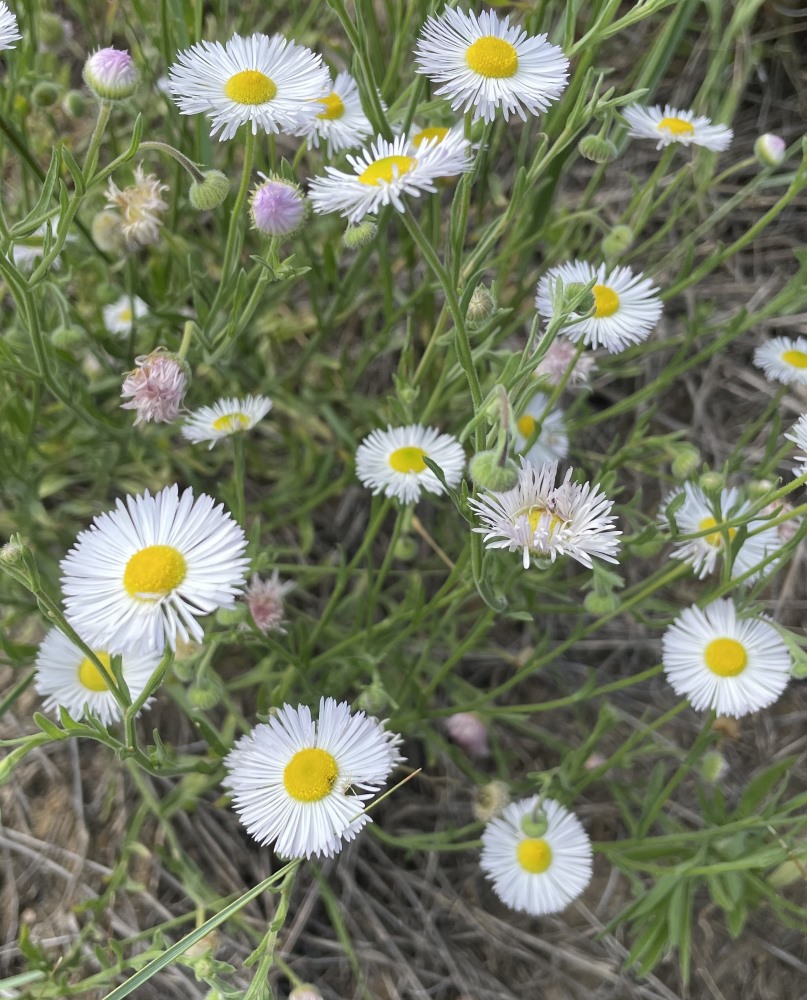Resilient Native Plants with White Blooms
Summer on the Colorado plains brings many hot days with not much rain! The heat and dry weather don’t generally affect the plants, birds and animals in the wet riparian areas near streams but the dry prairie ecosystem is parched. While there is less green than before, many plants still have evolved to thrive and bloom in the dry heat. Here are some of the plants with white blooms that can be found in Willow Spring Open Space.
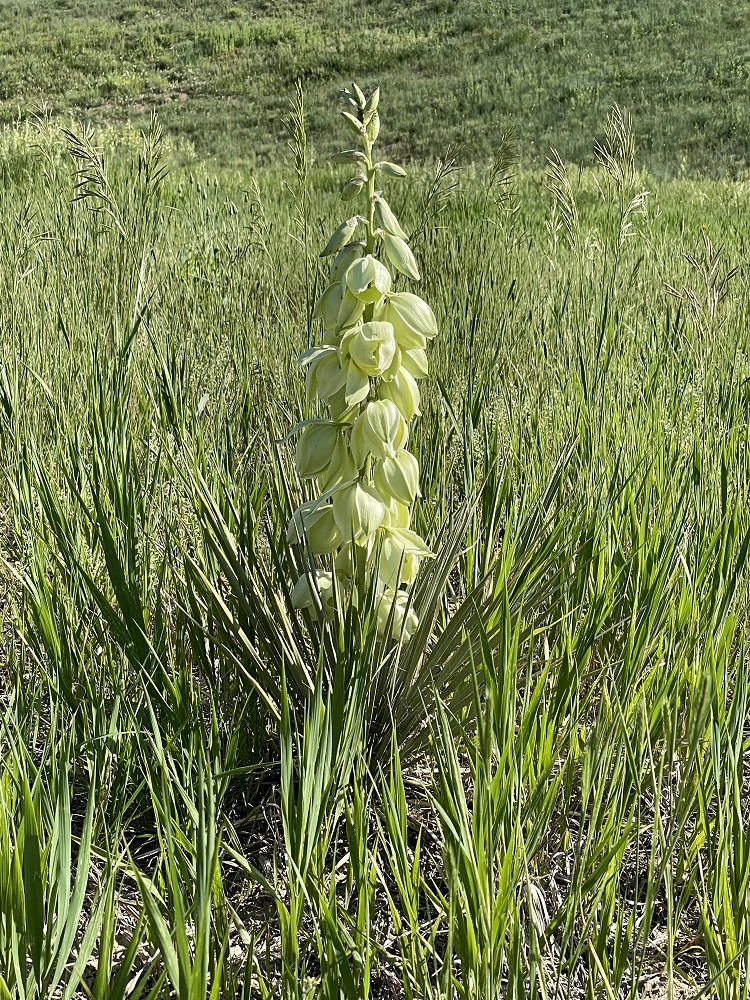
In addition to plants that are known for their ability to survive in dry heat, such as the Great Plains Yucca shown with its June blooms above, there are other plants that also do well in those conditions.
Prickly Poppy

The Prickly Poppy (Argemone polyanthemos) is an annual flower (it dies each winter and grows from seeds) in the poppy family that can bloom from spring to fall. It stands out among the dry grasses and yuccas with its bright white bloom which is up to 5 inches in diameter. It is a native plant to this area and likes sandy soils found in grasslands and open slopes. Note that all parts of this plant are poisonous if eaten, and the spines have a substance that is irritating to the skin, so stay clear of this pretty flower.
Drummond’s Milkvetch
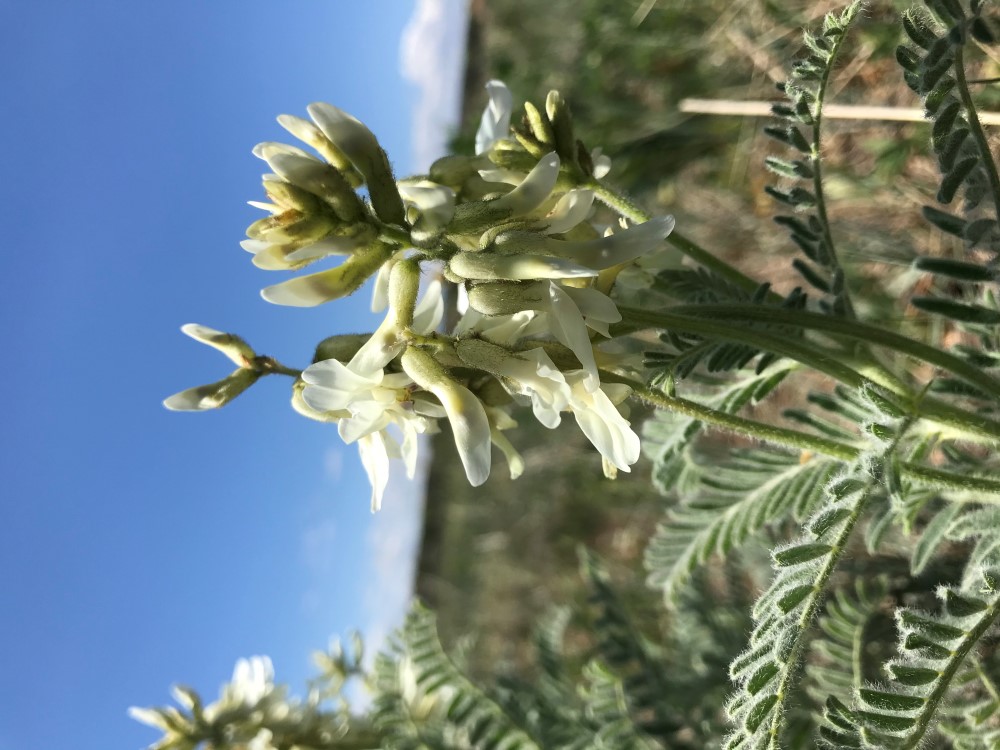
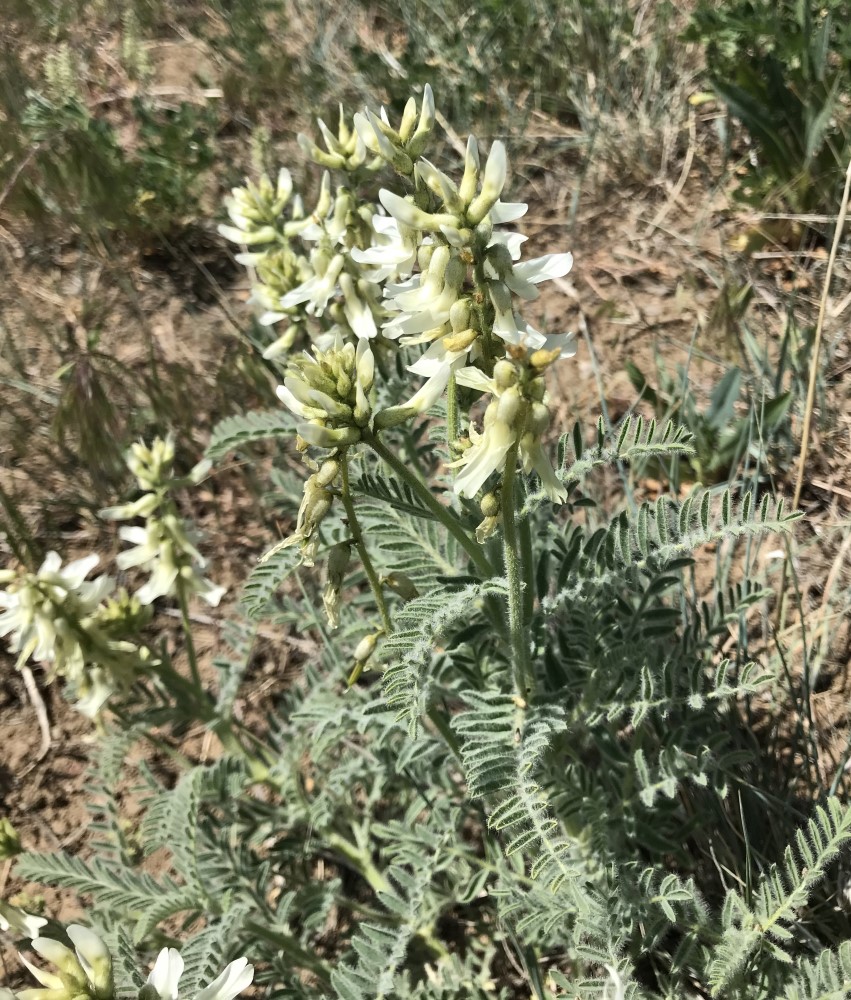
Drummond’s Milkvetch (Astragalus drummondii) is a perennial flower (grows back each spring) in the pea family. This is a native plant which is common on the shortgrass prairie in elevations from 4,200-9,500 feet, and blooms May – August, and so is very well adapted to our climate here. It is closely related to the locoweed!
Branching Daisy or Spreading Fleabane
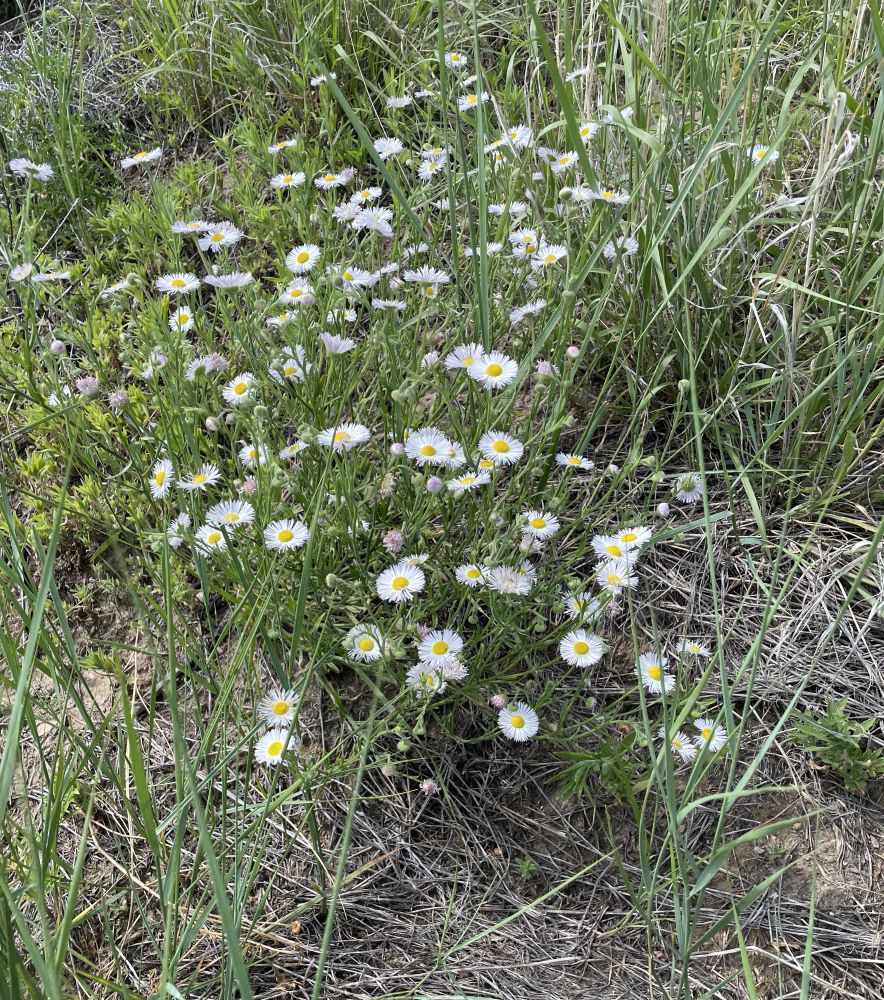
The Branching Daisy (Erigeron divergens), is a hardy native daisy in the sunflower family, which can be found in Colorado from grasslands up to mountain meadows. It is also sometimes known to as Spreading Fleabane, as superstition held that a dried bunch of these flowers could rid your home of fleas. It can bloom from March – August, and is generally a biennial, which means that the individual plant lives for 2 years. It can be found growing low along the trail edges and on the Englewood Dam slope as a bright spot of white.
White Penstemon

This White Penstemon (Penstemon albidus Nutt.), in the plantain family, surprised me when I spotted it in among the grasses on the west side of the Willow Spring Open Space, as I associate penstemons with the mountains. However, this particular species is native to shortgrass prairies and eastern plains of Colorado at elevations from 3,500-6,800 feet. It blooms May-July and is a favorite of bees and hummingbirds.
Non-Native Blooms
Some of the most drought-tolerant plants have been introduced here from other places. Unfortunately, they can dominate over the natural native vegetation, which has evolved to be essential for pollinators and birds.
Field Bindweed
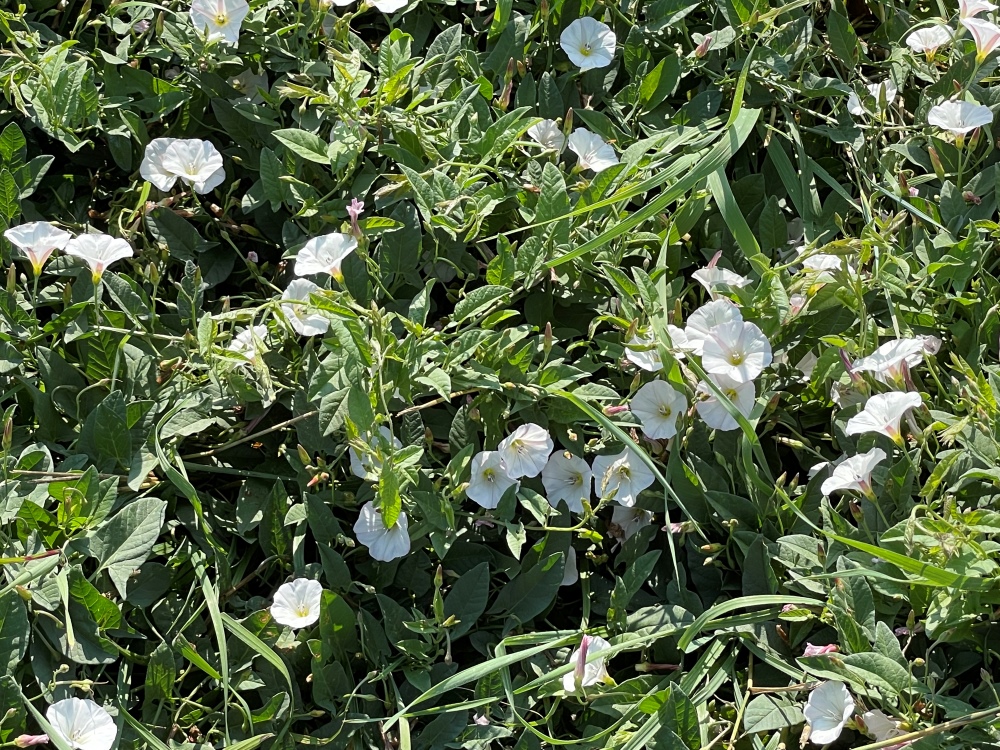
A non-native plant which is very invasive is the Field Bindweed (Convolvulus arvensis), which is in the Morning Glory family. The small flowers are white or can have pink stripes, and look pretty until you see that the long stems they grow on are choking the hapless plant they are covering. They seem to be everywhere – out in fields and also in many gardens. This plant is a Noxious Weed, as monitored by the Colorado State Department of Agriculture. The seeds can remain viable for over 50 years, and the taproots are 2-10 feet deep. Pulling these up only increases the number of plants to sprout back up from the roots.
Hoary Alyssum

The Hoary Alyssum (Berteroa incana) has pretty flowers on a tall, weedy stalk. This is in the Mustard family, and spreads through the many seeds it produces. This plant is on the Colorado Noxious Weed watch list and is considered noxious in many states. It invades pastures, out-competes beneficial plants, and is poisonous to animals, especially horses if it gets in their hay.
Poison Hemlock
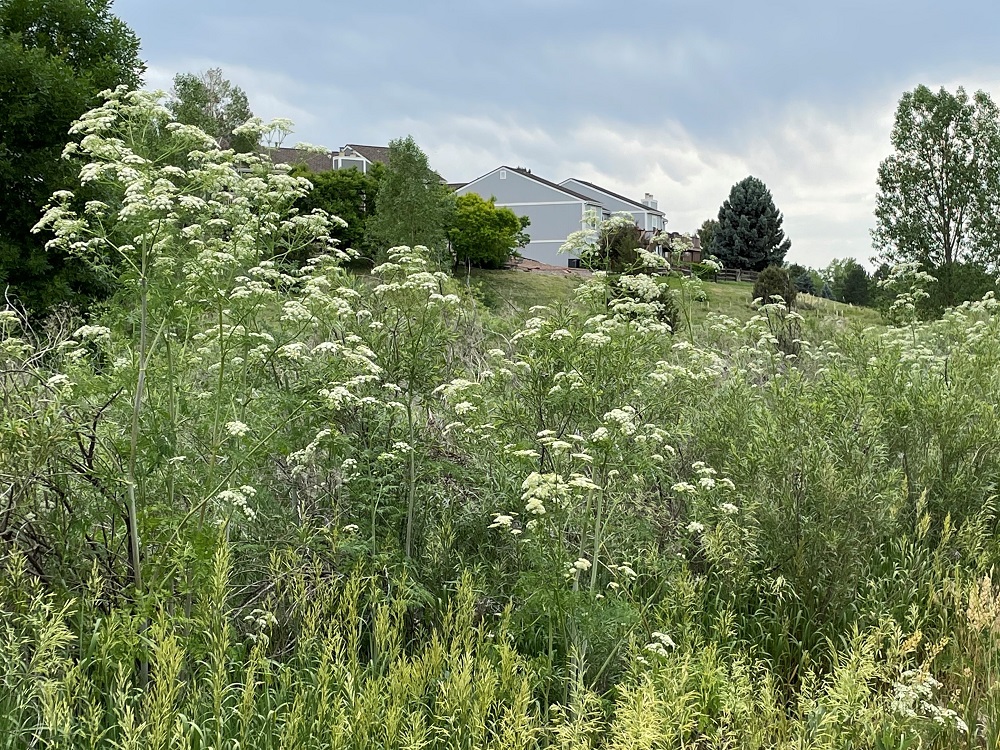
Although Poison Hemlock (Conium maculatum) is a wetland plant, rather than dry prairie, it is so prevalent in the Willow Spring Open Space that I include it here. It is highly toxic and can make people sick from eating any part of it or even using the hollow stem as a whistle. It is in the Parsley family and is so closely related to parsley and carrots that its leaves have the same lacy appearance as carrots. It blooms from June-August and is found around the south and west edges of the wetlands, including surrounding the swimming hole. Avoid it!
References and Further Reading
- Botany in a Day: The Patterns Method of Plant Identification, by Thomas J. Elpel, 1967
- Flora of Colorado, by Jennifer Ackerfield, 2015
- Colorado State University Extension, Colorado Native Plant Database Data Portal
- Noxious Weeds of Colorado, 14th Edition, Colorado Weed Management Association


